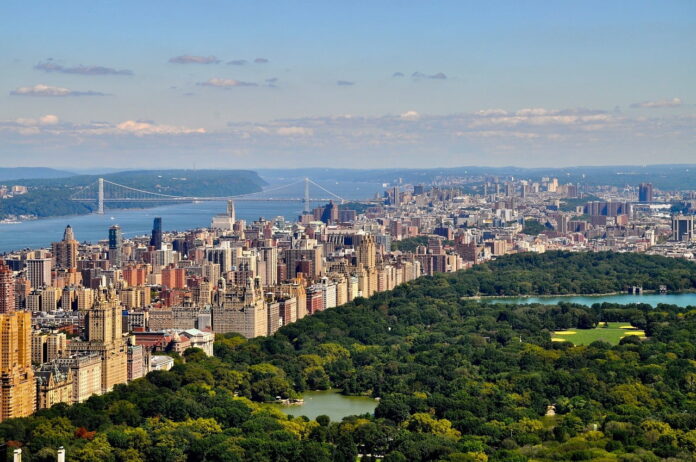Urban wetlands are often overlooked in city planning, but they play a crucial role in maintaining environmental balance and supporting water management systems. These natural assets offer an array of benefits that are essential for sustainable urban development. They act as natural water filters, help control floods, and sustain a rich biodiversity that can thrive even within densely populated areas. However, urban wetlands face numerous challenges, from pollution to land development pressures. Understanding their dynamics, the benefits they provide, and the obstacles to their conservation and proper management is vital for leveraging their potential to support urban environments.
Understanding Urban Wetlands
Urban wetlands are diverse ecosystems found within or on the fringes of cities and towns. These wetlands can be natural or artificial, including marshes, ponds, floodplains, or swamps that exist within urban landscapes. They are often integrated into the hydrological cycle of an urban area, impacting groundwater recharge, surface water flows, and overall water quality. Urban wetlands can vary in size and type, and their ecological characteristics are influenced by the surrounding urban environment, which can alter natural water flows and nutrient cycles.
These ecosystems are dynamic and adapt to both natural and human-induced changes, making them important components of urban resilience. They provide habitat for a variety of species, some of which might be rare or endangered, thus contributing to biodiversity within city confines. The existence of these wetlands within urban settings offers a unique opportunity to educate the public about the importance of preserving natural habitats and the benefits they can bring to city life.
Understanding the function and value of urban wetlands is the first step towards their preservation and integration into city water management strategies. They serve as a bridge between land and water systems and are essential in maintaining the ecological balance within urban areas. Recognizing their multifunctional role is crucial for city planners and policymakers to incorporate these natural assets into sustainable urban development plans effectively.
Benefits to Water Management
Urban wetlands play a pivotal role in water management by acting as natural sponges that absorb and store excess rainwater, which helps to reduce flooding in times of heavy rainfall. They slowly release the stored water, replenishing groundwater levels and maintaining stream flows during dry periods. This buffering capacity is essential in urban areas where impervious surfaces like roads and buildings can lead to rapid runoff and increased flood risk.
Wetlands also act as biological filters, removing pollutants, sediments, and nutrients from the water through natural processes. Vegetation within wetlands can uptake contaminants, and the wetland’s soil microorganisms can break down pollutants, improving water quality before it reaches rivers, lakes, or aquifers. This filtration process is invaluable, especially in urban areas where water can be heavily contaminated by industrial discharges and urban runoff.
Urban wetlands can be integrated into green infrastructure strategies, offering a cost-effective alternative to traditional water treatment systems. By harnessing the natural processes of wetlands, cities can manage water more sustainably, reducing reliance on engineered solutions that often come with higher economic and environmental costs. This integration not only enhances water management but also contributes to creating more livable and aesthetically pleasing urban environments.
Challenges and Solutions
Despite their significant benefits, urban wetlands face numerous challenges. The most pressing issues include habitat destruction due to urban expansion, pollution from industrial and domestic sources, and the invasion of non-native species that can alter the ecological balance. These challenges can degrade wetlands, reducing their ability to provide the aforementioned benefits. As cities grow, the pressure on land increases, often leading to the reclamation of wetlands for development purposes.
To protect and make the most of urban wetlands, effective legislation and policies that prioritize wetland conservation are required. Environmental regulations should be enforced to prevent pollution and manage waste, while city planning should incorporate wetlands as vital elements of the urban landscape. Public-private partnerships can also be instrumental in implementing conservation efforts and promoting sustainable development practices that include wetland protection.
Education and community engagement are essential in overcoming these challenges. Raising awareness about the importance of urban wetlands can foster a sense of stewardship among city residents. Involving local communities in the management and conservation of these areas can lead to more successful outcomes. Employing adaptive management strategies that can respond to changing urban dynamics will ensure that wetlands continue to function effectively within the urban ecosystem.
Urban wetlands are unsung heroes in the realm of water management within our cities. They offer a multitude of benefits, from flood control to water purification, and contribute significantly to urban biodiversity and the overall health of the environment. However, acknowledging and overcoming the challenges that threaten these vital ecosystems is critical for their survival and functionality. By integrating urban wetlands into city planning, enforcing strong conservation policies, and encouraging community involvement, we can ensure that these natural treasures continue to sustain urban life. As cities evolve, the imperative to protect and sustainably manage urban wetlands becomes ever more apparent, for they hold the key to resilient and resource-efficient urban futures.
